Science works to save a salty world treasure
Water and pollution threaten Poland’s 700-year-old World Heritage Site
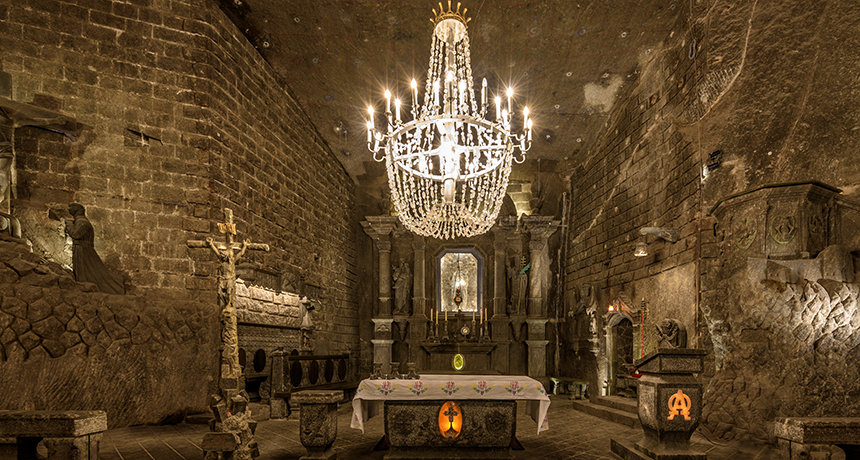
Most of the items in this impressive room were carved from salt. Scientists are working to preserve them and other parts of the Wieliczka Salt Mine in Poland.
JaroPienza/iStockphoto
WIELICZKA, Poland — Shining a flashlight, Marek Klimowicz [KLEE-moh-veech] leads me through a dimly lit tunnel. Old wooden timbers support the roof and walls of rock. The tunnel leads us to a warren of rooms large and small. With few exceptions, Klimowicz says, “Everything here is salt.”
There’s salt above us. We walk on a floor of salt. Just an arm’s length away are walls of salt. In all, this underground warren contains some 2,000 chambers. They span a vast 7 million cubic meters (265 million cubic feet). That’s nearly triple the volume inside the Great Pyramid of Giza in Egypt. And it’s almost twice the volume of the NASA Vehicle Assembly Building, where huge rockets were built, in Florida.
We’ve just gone down 380 stairs to a chamber 64 meters (210 feet) underground. Our depth is more than the height of a buried 19 story building! Over the next two hours, we’ll trek down another 400 stairs, more than doubling our depth. Some rooms are small, others the size of ballrooms or cathedrals.
Just 15 kilometers (9 miles) from Kraków, Poland, we’re traveling through an eerie subterranean world. Its formal name is the Wieliczka and Bochnia Royal Salt Mines. To most people, it’s simply Wieliczka [Vee-LEETS-kuh].
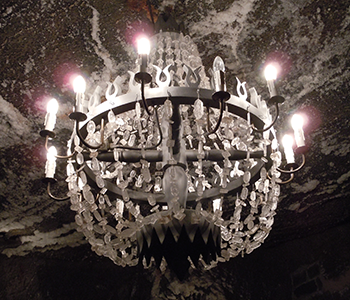
For seven centuries, miners hauled salt from its depths. Before refrigeration, that salt helped preserve foods. It added flavor. And it provided a needed nutrient in the diet. Today salt has many additional uses. For instance, it melts ice on roads, treats hard water and helps make paper.
Mining here was hard and dangerous. In the 1500s and 1600s, one in every 10 miners each year died in methane explosions. So the mine, both beautiful and perilous, evoked reverence from its workers. Many began carving people, biblical scenes and more in its salt.
Although most mining ended here a bit more than 20 years ago, this is no 700-year-old derelict. Quite the opposite. The mine also runs a spa offering salty treatments. And its many carvings have gained world renown. Roughly a million people visit Wieliczka each year to view this art.
Indeed, that’s one reason the United Nations Educational, Scientific and Cultural Organization — or UNESCO — has designated Wieliczka a World Heritage site. That means it’s so special to the cultural and natural heritage of people around the world that it must be preserved as one of the “irreplaceable sources of life and inspiration.”
Already, more than 1,000 sites have earned this distinction. They range from the Pyramids of Egypt and Great Barrier Reef to East Africa’s Serengeti and England’s Stonehenge to the Statue of Liberty in New York City and Mammoth Cave National Park in Kentucky. Wieliczka was one of the first 12 sites added to the list as it was first being drawn up in 1978.
Today some of the Wieliczka’s rooms serve as a museum. Many host beautifully carved, centuries-old statues. There’s even an underground church. But UNESCO also cares about this site because it faces threats.
For years, moisture — from Mother Nature together with the exhaled breaths of awed visitors — has been eating away at the site’s salty treasures. And that’s where science comes in. Researchers also have been studying this unique spot to better understand how it developed and survived for so long. They hope that what they learn will allow it to persist for many centuries to come.
Salt is a famous food preservative, but scientists now need to figure out how to preserve the salt itself.
A crystalline world
Legend credits a Hungarian princess named Kinga with finding this massive salt deposit in the 1200s. She was engaged to a Polish prince, Bolesław [BOH-leh-swahv]. On her way to Poland to marry the prince, she stopped at a salt mine in Hungary her father had given her. She supposedly threw her engagement ring inside as a sign of ownership. She then headed to Poland with a group of Hungarian miners in tow. And when she approached the Wieliczka region, she told the miners to dig into the ground. They did. Their reward was a treasure — an enormous bounty of crystalline salt. Hidden in the salt was Kinga’s ring.
Although charming, that’s clearly a tall tale.
The real story of Wieliczka’s salt began millions of years ago, says Krzysztof Bukowski [BOO-koov-skee]. He is a geologist at AGH University of Science and Technology in Kraków. His group studied the mine’s salt crystals to figure out where all that salt came from. The team determined that the region had once been connected to the salty ocean.
Over time, that seawater evaporated, leaving behind salt. Lots and lots of it.
That conclusion is based on inclusions in the rock salt.
In geology, an inclusion is a bit of something inside a rock. It had to exist before the rock formed. Bukowski explains, it’s “like a time capsule.” At the mine, some inclusions are bits of ancient water. That water, in turn, contains ions. Those are charged atoms or molecules. Bukowski’s group looked at the levels of potassium, magnesium and sulfate ions in samples from the crystals. They were similar to their levels in modern seawater. And the results were unlike those for inland salt lakes (such as Utah’s Great Salt Lake).
That’s not all. Some inclusions contained the remains of one-celled organisms. In one study, Bukowski’s group looked at the different species of a group called foraminifera [Foh-ram-uh-NIF-er-uh]. The relative amounts of different species provided clues about the temperature and available food in that sea long ago.
Wieliczka’s mineral wealth is halite (HAY-lyte). You know it as sodium chloride, or common table salt. Starting in the 13th century, this resource brought prosperity to southern Poland. (Indeed, the term “salary” comes from the Latin for salt. History suggests some of the ancients may have been paid for their labors in salt. That led to the phrase “worth his salt.”)
The air down there
Decades ago, some of the mine’s famous statues began dissolving. The staff called in scientists to investigate how to stop the loss of these treasures. But first the researchers had to better understand the mineral structure of the site’s salt. They also had to focus on controlling moisture.
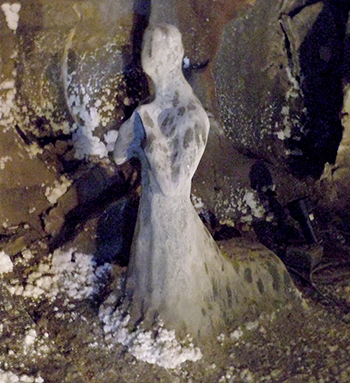
Relative humidity is a measure of how moist the air is. Pure rock salt stays solid as long as the relative humidity is below 75 percent. But pollution can make salt more vulnerable to melting.
Air enters the Wieliczka mine from above the ground. Since the 20th century, it has come in tainted with modern pollutants. These include sulfur dioxide and chemicals produced by burning fossil fuels. Once inside the mine, these pollutants stick to the salt and anything carved from it, including the statues.
This changed the surface chemistry of the salts, especially of the salt closest to the entrance. No longer pure sodium chloride, the salt now could dissolve at lower humidity levels. And that’s important because humidity levels in the mine had grown high. A primary source? The breaths of tourists visiting the mine.
Each exhaled breath sent moisture into the air. It collected on the salt, forming a fine liquid film. That film was dissolving some of the carvings’ fine features. A face would lose its nose and ears. Or a hand might lose its fingers as they slowly dripped away.
When scientists recognized the role of pollution and breaths, they installed a system to lower the level of water vapor in its air. The system worked! Wieliczka came off the list of endangered UNESCO sites 19 years ago.
Still, that didn’t erase threats to the mine.
The ruin of rust
Many of this mine’s deposits naturally formed into fanciful shapes. Known as speleothems (SPEE-lee-oh-thems), they might look like icicles, soda straws, popcorn or even lacy crusts. These form as water loaded with minerals seeps into a cave. As the moisture evaporates, the minerals stay behind.
“There are fantastic structures that you cannot find anywhere [else],” says Jerzy Przybyło [PZHIH-bih-woh]. He’s a geologist at the Wieliczka mine. Unlike speleothems in many other caves, those at Wieliczka are solely salt. But owing to impurities, the salt here can be yellow, red — even brown. Pure salt would appear clear or milky white.
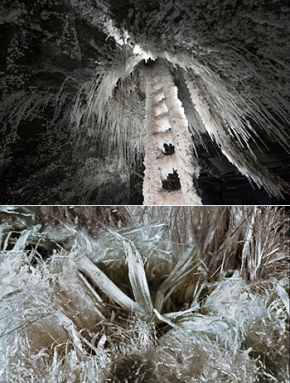
Przybyło works with geologists at Jagiellonian University in Kraków. They probed some of the mine’s salt rocks under high magnification. Uneven surface features emerged. The group also dissolved bits of different-colored speleothems in water. Then they compared these to samples of brine from the mine. (Brine is water with a lot of dissolved salt.)
Along with the salt’s sodium and chloride they turned up iron and more.
Many of the iron-based compounds seem to exist only on the salt’s surface. This appears to reflect rust deposited from mining tools. Over hundreds of years, tools would have broken or chipped in the mine. The salty environment would have sped up their corrosion, the researchers believe. They described their findings three years ago in Geological Quarterly.
Rust added pretty colors to the mine’s salt formations. But those corroding tools might now be damaging some of the mine’s wooden structures.
Many of the wall and roof supports are wood, as are the stairs. Workers also used some wooden tools. For instance, a huge wooden machine once hoisted heavy rock salt up to the surface. A team of chemists from Poland and Italy examined wooden objects in the salt mine’s museum. And the spruce, pine and fir samples they studied definitely were deteriorating.
Salt had combined with iron oxides from tools to make compounds that entered the wood. Those compounds sped up the decay process, the team concluded. Their findings might now help people figure out better ways to preserve wooden items.
Mother Nature doesn’t help
Wooden timbers and more modern supports help shore up the mine. But the walls and ceilings are still salt. And too much water could cause cave-ins.
The Carpathian Mountains extend for 1,500 kilometers (930 miles) through Central and Eastern Europe. Movements of Earth’s tectonic plates push those mountains up, explains Krzysztof Brudnik [BROOD-neek]. He’s a geologist at the Wieliczka mine. “The salt deposit is on the border of the Carpathians,” he notes. Those tectonic movements can push more groundwater towards the mine.
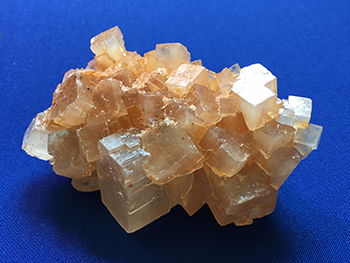
Mining also affects water flows. Over the years, miners have poked holes through different rock layers, Brudnik and his colleagues have found.
Today, about 140,000 cubic meters (37 million gallons) of groundwater enter the mine each year. That’s enough water to fill nearly half a million bathtubs! In contrast, only about 7.2 liters (2 gallons) enter the Bochnia salt mine fewer than 30 kilometers (19 miles) away.
Water entering the mine now gets pumped to the surface. Brine flows down wooden ramps in a wide tower outside the mine. That creates a salty aerosol for spa visitors to enjoy. Salt also is extracted from this liquid to make kitchen salt, bath salts and other products.
One bad flood in 1992 “was a threat not only to the mine, but also for the town,” Brudnik says. Officials posted plans around town just in case a large cave-in occurred. People would have needed to suddenly evacuate.
Fortunately, that didn’t happen. Water came in, but the whole mine wasn’t flooded. Still, it took about eight months to stop the flow.
Effects of the flood remain. Zbigniew Perski [PEHR-skee] is a geologist at the Polish Geological Institute in Warsaw. He and his colleagues found signs of some small cave-ins when they used satellite data to study land around the town. Their work also showed the results of some above-ground landslides in the area.
The nearby mountains may have played a role in some of those events, too, the team suggests.
A breath of fresher air?
Another recent study looked at the mine’s levels of particle pollution, or PM. High levels of super small airborne particles can worsen asthma and other respiratory diseases. Breathing these tiny particles also has been linked to a heightened risk of heart disease. But the mine’s salty surfaces may act like a sponge to remove many of these particles from the air, researchers now report.
Magdalena Kostrzon [KOHST-zhohn] is a biologist who works at the mine’s spa and health resort. She and a team of environmental engineers found lower levels of PM in the spa’s underground treatment rooms than in various outdoor areas of Poland.
Before entering the spa’s rooms, incoming air must pass through 700 to 800 meters (765 to 875 yards) of salt tunnels. Many tiny particles of pollution stick to the tunnel walls. Moisture turns some of the surface salt into ions — electrically charged molecules. Those small electric charges appear to grab and hold onto the airborne particles.
People living in Kraków and other cities with lots of outdoor air pollution would like to spend time somewhere with cleaner air, Kostrzon says. “You can find such a place,” she says, “135 meters [150 yards] below the ground in the Wieliczka Salt Mine.” Her team reported its findings last year in the book Pathobiology of Pulmonary Disorders.
Visitors continue to flock to Wieliczka. One recent project laid tracks for an underground train. It will soon open to let visitors see more parts of the mine.
Meanwhile, Brudnik and his team still keep an eye on the flow of water into the mine. He and Przybyło also have been overseeing work to fill in some of the mine’s rooms with sand. That can cut the risk of their collapsing as Earth’s natural forces continue to push up the nearby mountains. (Think about how it takes more force to push down a solid block structure than a hollow one.)
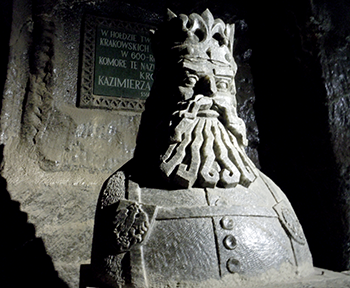
As part of that work, the geologists look for any unusual salt formations in places that might need to be filled in. Their team wants to save those formations, where possible. But in any case, “the safety of the mine [and] the safety of people is the priority,” Brudnik stresses.
“It is remarkable to think what this particular mine has survived, and what its generations of workers have experienced,” says Isabelle Anatole-Gabriel. She’s a historian and archaeologist at UNESCO’s World Heritage Centre in Paris, France. During the mine’s long history, Poland has been a kingdom. Then the country was split up and disappeared. Later its territories rejoined. Just 65 years ago, Nazis invaded Poland. After World War II, communists took over. The country is a democracy now, but it faces new challenges.
Throughout all of this, the Wieliczka mine has been part of Poland’s culture. It shows the “evolving interconnection between humankind and the Earth,” Anatole-Gabriel says.
UNESCO’s World Heritage Committee lists Wieliczka as one of its “success stories.”
How so? Using science, the mine’s staff has halted the rapid melting of its structures and charted a path to saving them.
Protecting world heritage sites often, as here, requires cooperation from people in a range of nations. But their success means people can have a chance to enjoy such sites for centuries to come.







